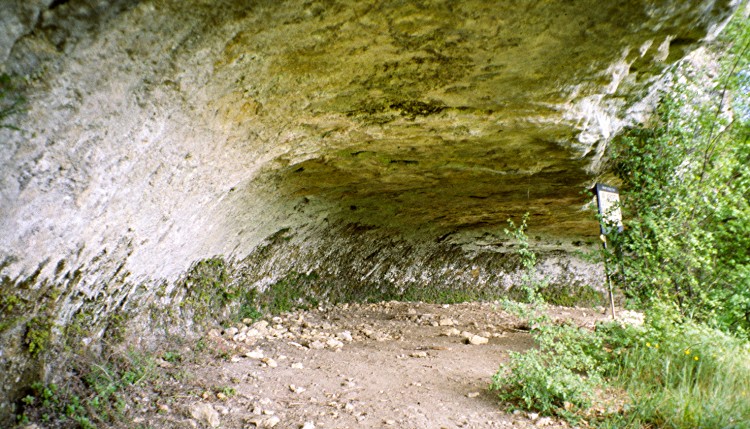[< Gallery Home | Latest Images | Top 100 | Submit Picture >]
277292 Pictures
|
<< Previous Picture | Next Picture >>

| Submitted by | greywether |
| Added | Jul 04 2005 |
| Hits | 2424 |
| Votes | 0 |
Posted Comments:
tashi (2007-05-23)
Le Moustier is one of the greatest of the (relatively) uknown archeological sites in the Dordogne. I lived a mile or so from this site, on the Vezere River which carved this grotto several tens or hundreds of thousands of years ago. (Present river is maybe twenty to forty feet below the site of photo). I haven't been to Le Moustier in almost 20 years but this site in the photo shows plenty of evidence of habitation -- carved steps, square h oles for cross-beams, on several levels of grottos up to 60-80 feet above the road below, in between cliff and river. Indeed, this is where the monastery (Old French: 'moustier') was located, not on this level but on ones above it, in the middle to late middle ages. Prior to that, the Vikings rowed up the Vezere and slaughtered everyone living there, I am told, maybe 7th century or so, long time ago. Near this site there are many caves in the hills, mostly unexcavated. One, right behind the Le Moustier baker's, was the site of an important Neanderthal skull find, one of hte oldest. Behind the bakers', they put in a new orchard and turned over the ground. My archeologist friend and I found numerous flint fragments with signs of human workmanship -- all discards, no fine points, crude and thick, heavy oxidation, could have been 40+K years old. This area is a vast, unexplored, amateur archeologists paradise. The woods are full of medieval ruins (mostly small), stone piles and monoliths in various states of dishevelment. You have to use your imagination and a bit of elbow grease, but with slight perseverance anyone can visit this region and go home with minor artifact souvenirs. God only knows how many local caverns, like Pechemerle, contain masterpieces of neolithic art that have yet to be discovered. I found several possible cavern entrances, small grottos (apparently) in the hills that showed evidence of habitation -- such as ancient carbon deposits on the ceilings -- but were filled with mud and debris, hence quite possibly concealing entrances. There are also many unexplored natural cliff-grottoes that might yield treasures as well.
To post comments first you must Register!
